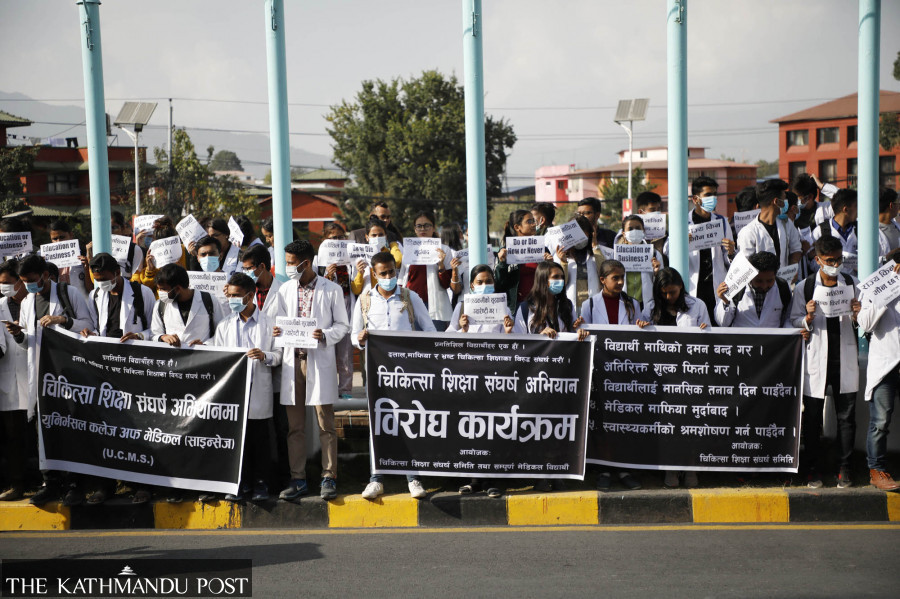Editorial
Medical malpractices
Private institutes in the medical education sector have been attracting attention for all the wrong reasons.
If anything, the ongoing pandemic has pointed out the necessity of an efficient health system. And to establish a world-class health system, what is required, first and foremost, is the government’s will to achieve such institutional goals. Well! Since the authorities spend far too much time bickering and squabbling over matters primarily concerning Cabinet expansion, it can be fairly assumed that the creation of almost all sectors has been contracted out to the private sector. Even if it is something as crucial as sectors concerning health and education. And over the past few years, private institutions in the medical education sector have been attracting attention for all the wrong reasons again.
One person, Dr Govinda KC, took the initiative to highlight the malpractices being carried out by private medical colleges. Before Dr KC’s intervention, there was no consistency in the fee structure of private medical colleges. And despite the existence of the Medical Education Commission to check the malpractices in Nepal’s medical education sector. A news report published by The Kathmandu Post has shone light on how private medical colleges have been charging arbitrary fees under various pretexts.
It is a well-known fact that medical education doesn’t come cheap. With costs running into millions of rupees, parents often take educational loans and even sell assets such as land and jewellery to fund their children’s education. And since the establishment of the Medical Education Commission, the fee has been fixed at Rs4.02 million for MBBS students inside Kathmandu Valley and Rs4.44 million for the rest of the country. That should have been the fee in its entirety apart from expenses for accommodation.
Flouting the norms set by the commission, private medical colleges have been charging for internship programmes, registration and examinations. And they are charging as high as Rs20,000 per student for internet, something that is usually taken as a necessity in the running of any organisation with or without customers. So how do these private medical colleges muster the courage to defy existing standards? Or is there some sinister collusion between political actors and the administrators of private medical colleges? How else should one explain the feeble approach of the commission? Should it always take the protests of a single person or that of the students to highlight the malpractices going on in medical education?
And suppose the disruptions brought upon the education sector by the pandemic weren’t enough. In that case, instead of attending classes, the students now have no other choice but to protest the imposition of these arbitrary fees. These unscrupulous acts are nothing short of an attack on the future of the affected students. And the government, instead of intervening to take stern action against the institutions that are openly flouting directives, is seen to be delaying in providing a quick resolution to the matter. If the state’s priorities had been to provide exceptional education and health care, they would probably have utilised resources to maintain standards themselves instead of outsourcing tasks to the private sectors.




 10.12°C Kathmandu
10.12°C Kathmandu














